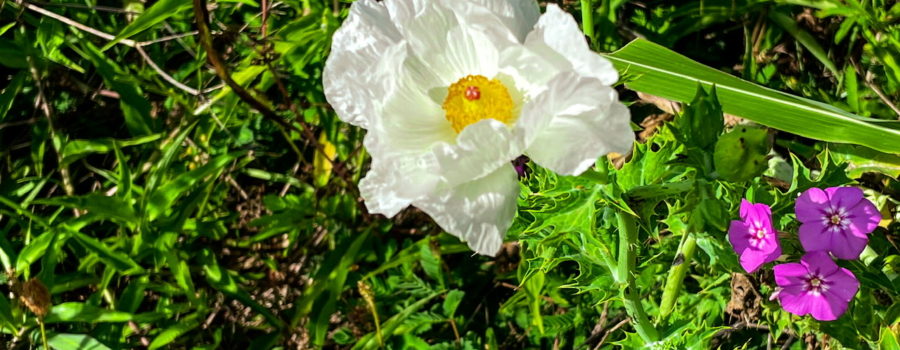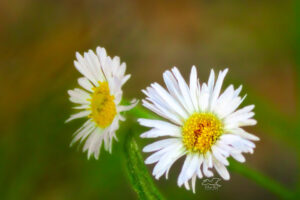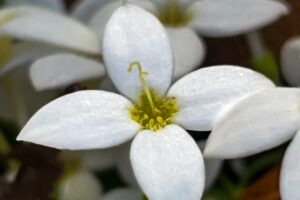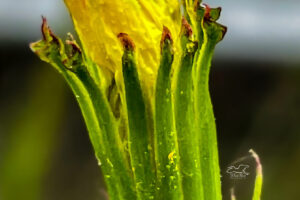White Prickly Poppy: A Beautiful Plant with Two Sides

This has been kind of a weird year up until now as far as the weather goes in Central Florida. It started out pretty normally, but perhaps a little dry. We had cooler weather, especially at night, further into the spring than we usually do, and about the time we started seeing more heat even at night we also went into a drought. At the beginning of spring we had an abundance of wildflowers popping up everywhere, but as things got drier and drier a lot of the wildflowers began to die back. In fact, for a couple of weeks, pretty much everything was dry and crunchy, even the hardiest of the weeds. During all of that, though, there was always one plant blooming away. You see them blooming this time of year every year, but they really stood out this year when everything else was wilting. They are the white prickly poppies.

I remember these plants from vet school (no, we only studied animal medicine, not plant medicine!) from our toxic plants classes. They are particularly easy to remember since I think all of us managed to get spines from them embedded in our hands while collecting specimens for pressing as part of a class project. As you can see, the flowers themselves are very attractive and even when other things are blossoming they are such a bright, clean white that they stand out. The entire rest of the plant, though is covered in little prickly spines (thus the name prickly poppies). Even the seeds have spiny spikes on them! The entire plant is also quite toxic to people, livestock, and pets. Fortunately, most animals, even deer, won’t touch them due to the stickers.

Even though the plants themselves are toxic and unpleasant to touch, the flowers do attract quite a few pollen eating insects including bees, butterflies, wasps, ants and moths. For this reason and the fact that they take very little care or watering, some people use them as ornamental flowers in butterfly gardens. Similarly, the seeds are very rich in oils and are eaten by doves and quail (most other species of seed eating birds find the seeds too bitter and leave them alone). There are several species of prickly poppies in the United States and Mexico and some color variations in some of the species, but our Florida natives are always white.

Prickly poppies are in the same family as opium poppies, so it’s not surprising that even though the plant is poisonous, if prepared correctly, it has quite a few medicinal uses. Many of these uses are external such as using a wash made like a tea to treat sunburn or using the sap or latex on wounds, insect bites, warts, or other skin blemishes. But some of the medicinal uses do involve ingestion of the plant. For example, a tea made from the leaves can be used as an analgesic and a sedative. Teas may also be used as emetics, diuretics, and as a treatment for constipation. Dried leaves can also be smoked for a sedative and euphoric effect that some Native Americans used in religious ceremonies. This plant, like many other herbal remedies should definitely be used with caution and only by people with experience in such matters. If used incorrectly, this plant can easily cause edema, congestive heart failure, and death. Like so many other things out there in this world there are two sides to this plant: beauty and medicinal remedies on the one hand and prickles and deadly toxin on the other.






Recent Comments